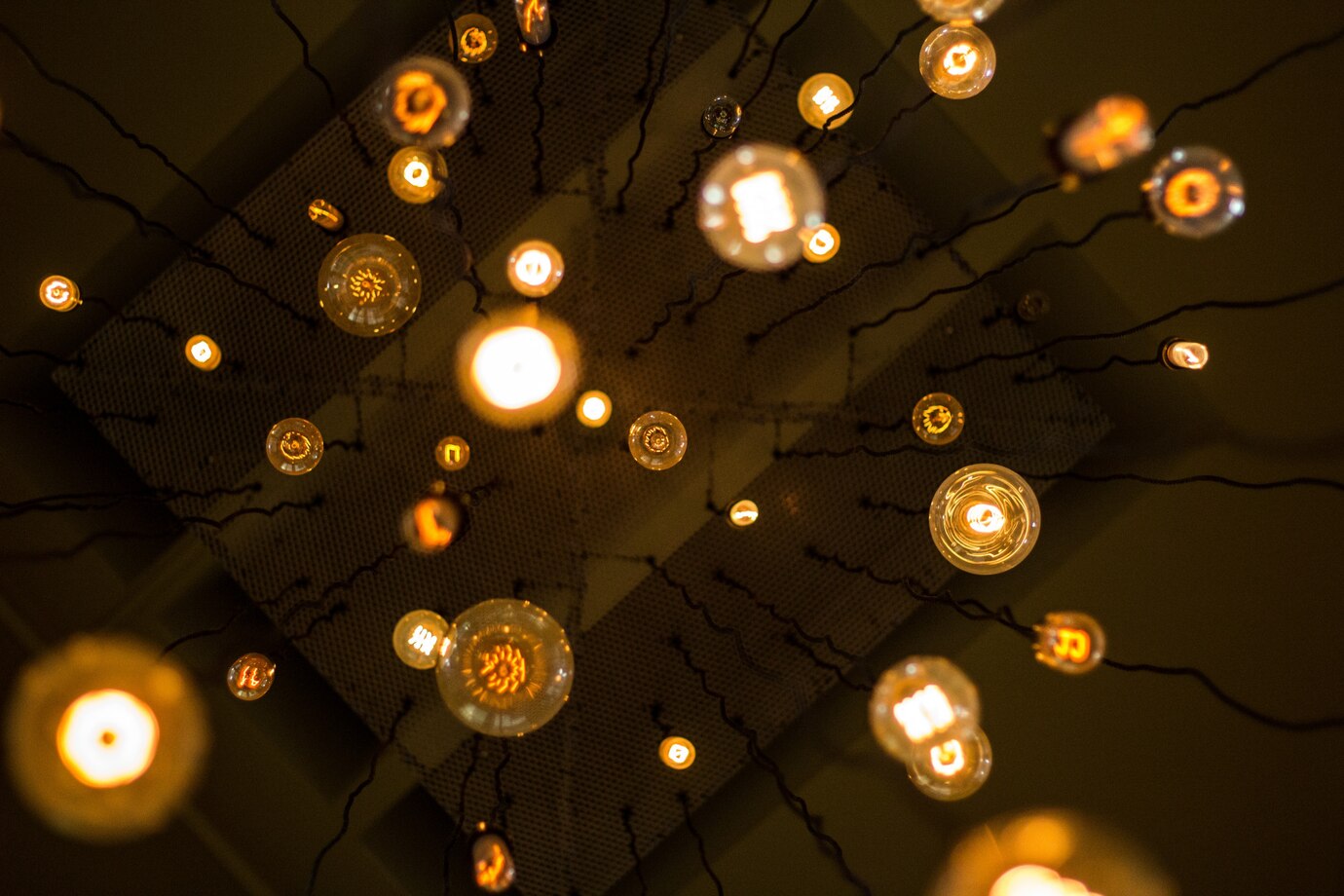Discover the key differences between warm and cool light and their effects on mood and productivity. Learn how to choose the proper lighting. Read Now!
Introduction
The colour temperatures of light create moods, increase productivity, and even set the atmosphere of a certain place or area. In homes, offices, or commercial establishments, proper and effective lighting always dictates how a specific area builds one’s feelings towards it. Though actions sometimes prefer watts of warm, comforting light glow, others thrive under cool lights, vigour, and concentration for activities such as reading or studying.
This article will discuss warm and cool lights, their benefits, and which one is best suited for particular environments.
What is Warm White Light?
Warm white light has a color temperature across an approximate range of 2700K—3000K, graduating into almost sunset-like brightness or incandescent bulb-like lights. Warm white feels comfy, relaxing, and homely. Warm white light is more warm, rich, and yellowish, well suited for places where you wish everything going on there be hushed and really soothing, such as the living room, bedroom, or even the dining room.
Benefits of Warm White Light
- Create a Cozy Environment: Warm white light creates a cocooned, comfy atmosphere waiting at the end of a long, tiring day.
- Better Quality Sleep: Deeper sleep is established as melatonin—the hormone regulating sleep—is produced when exposed to such warm, soft light. Thus, this is the light of choice for bedroom resets.
- Superb for Eye Strain Reduction: Where warm artificial light is present, the effects of illumination and light are generally softer and less harsh on the eye, making a warm white condition just right for reading or other tasks that require visual focus over an extended period.
- Inviting Relaxation: This light bears a sense of comfort, making it suitable for areas designed for relaxation and downtime.
- Great for Places Intended for Socialization: Use warm light to make rooms and dining spaces look closer together, such as in living rooms and dining areas designed for families and gatherings.
What is Cool White Light?
Cool white light falls between about 4000K and 5000K. It is light that gives a very neutral to bluish-white feeling, either daylight or fluorescent. Just like daylight, cool white lighting is intended to serve a bright, crisp, and energizing environment. This kind of lighting creates an environment for those minor details and, in the midst of an active mind, kitchens, offices, and workspaces.
Benefits of Cool White Light
- Wakes Individuals Up: The cool white light is spritely in brightness, thus ideal for workspaces and study areas, as it helps with focus and concentration.
- Boosts Productivity: Bright and pristine illuminance has been said to develop productivity by instilling a motivational environment that keeps individuals active and engaged.
- Enhancing Visual Sharpness: The cooler tone of white light offers better contrast and sharpness, helping with tasks that require precision, such as reading, sewing, and many intricate tasks.
- Reduced Eye Strain: It should lessen eye strain in situations where extremely detailed work is necessary or where there is little natural light.
- Fresh and Clean Appearance: Bright, cool white lighting gives a feeling of being very modern, clean, and clinical. That is why it is very commonly found in kitchens, bathrooms, and offices. The light maintains a bright, neutral look.
- Excellent for Task Lighting: This type of lighting is ideal for spaces that require critical specific tasks, such as kitchens, garages, or workstations.
- Improves Mood: According to research, cool white light sometimes elevates happy moods and energy levels depending on the time of day.
- Energy Efficiency: Last, it survives for a long time, thus ultimately reducing electricity costs.
Difference Between Warm Light and Cool Light:
| Feature | Warm Light | Cool Light |
| Color Temperature | 2700K to 3000K | 4000k to 6000k |
| Appearance | Yellowish/Golden tone | Bluish/White tone |
| Mood Created | Cozy, Relaxing, Comfortable | Bright, Energizing, Crisp |
| Ideal for | Living rooms, bedrooms, dining areas | Kitchens, offices, workspaces |
| Energy Efficiency | Less efficient than cool light sources | More energy-efficient, especially in LED form |
| Best for | Creating a soft and intimate atmosphere | Task lighting or areas that require focus |
| Effect on sleep | Promotes relaxation, good for evening settings | May interfere with sleep if used late at night |
| Light Intensity | Softer, more subdued | Brighter, sharper |
Choosing the Right Light for Your Home & Office
Selecting the correct lighting for a cozy, effective, and soothing atmosphere requires multiple considerations about an individual’s home or office. Some of the most important to consider are:
- Space Function:
- Home: Different parts of the house require different types of lighting. An example of this is that warm lighting is expected for the living room or bedroom because the intention is that it gives a sense of coziness and relaxation. At the same time, the kitchen and bathroom would require more bright white direct lighting for both visibility and brightness.
- Office: The final effect of the lighting chosen for a specific office is based on what the office or area generally does. For reading areas and usual offices, bright, cool white light would mainly help keep alertness and focus. Warm light in lounges or break rooms gives a very calming and relaxed atmosphere.
- Personal Preferences and Health Consciousness:
- Personal Preferences: Personal preference in how you prefer your lighting is indeed unique. For one person, that classic warm incandescent light does the trick, while for another, nothing beats the freshness of white LEDs. In the end, it all boils down to what temperature will work best for you based on your comfort and aesthetic tastes.
- Health Consciousness: The type of lighting you use can affect your health remarkably. Warm light is best for relaxing and sleeping, and the more astonishing light types are suitable to energise and keep brightness concentration during the daytime. If you are prone to working long hours with a lot of artificial lighting, then consider lighting that minimises eye strain and makes working more comfortable.
- Layering Lights: Layering lights involves combining ambient, task, and accent lighting to create a well-balanced and visually appealing space. This approach enhances functionality, sets the mood, and improves overall comfort in any setting.
- Ambient Lighting: This is a general overall lighting within a room, usually a ceiling lighting system or recessed fixtures. It establishes one’s base level of light in a physical space in general.
- Task Lighting: More focused lighting for a specific task, examples include desk lamps, under-cabinet lighting, or reading lights. A cool white light is indeed considered the optimum in this case.
- Accent Lighting: Used to highlight features or create mood, such as spotlights or wall-mounted lamps or floor lamps. Layering different types of lights allows you to modify the ambience and functionality of a room.
Conclusion
In assessing the purpose for which a space was designed, the individual’s preference as well as health considerations were paramount in selecting suitable lighting for home and office. The proper layering of lights—among ambient, task, and accent lights—will ensure that the lights are well-catered for different activities during the day, with flexible lighting schemes possible. Whether the light is going to be invigorating for your workspace or soft, yet around-the-house calming, appropriate lighting makes all the difference in the resulting levels of comfort and productivity.
For further information and inquiries about the best industrial lighting solutions we offer, visit us at AJV Tech.
FAQs:
1. Does warm light or cool light consume more energy?
The amount of energy a light bulb uses depends more on the type of bulb than its color. Whether you choose warm or cool light, LED bulbs are the smarter choice because they use much less energy than old-fashioned incandescent bulbs.
2. Which light is better for photography: warm or cool?
It all comes down to the look you’re going for. Warm light gives photos a soft, cozy, and natural feel, while cool light adds sharpness and clarity—perfect for product shots or studio photography.
3. Can I mix warm and cool lights in the same room?
Yes, you can, but it’s best to plan it out. Mixing warm and cool lights can create a nice balance—for example, using warm lighting for a cozy atmosphere and cool lighting for focused tasks.
4. Does cool light make a room look bigger?
Yes, cool light creates a bright and airy feel, which can make a room appear larger and more open compared to warm light.

